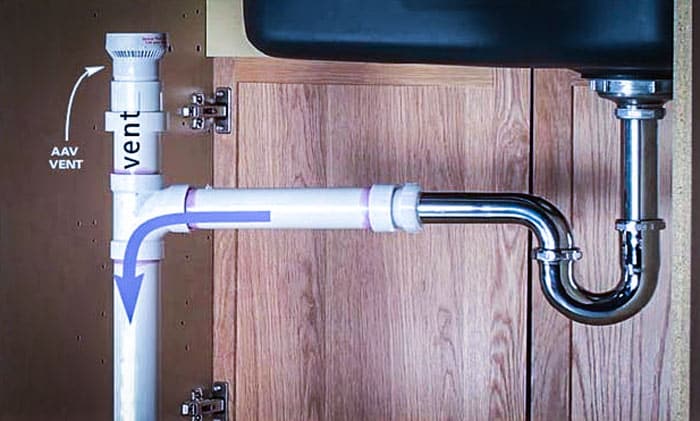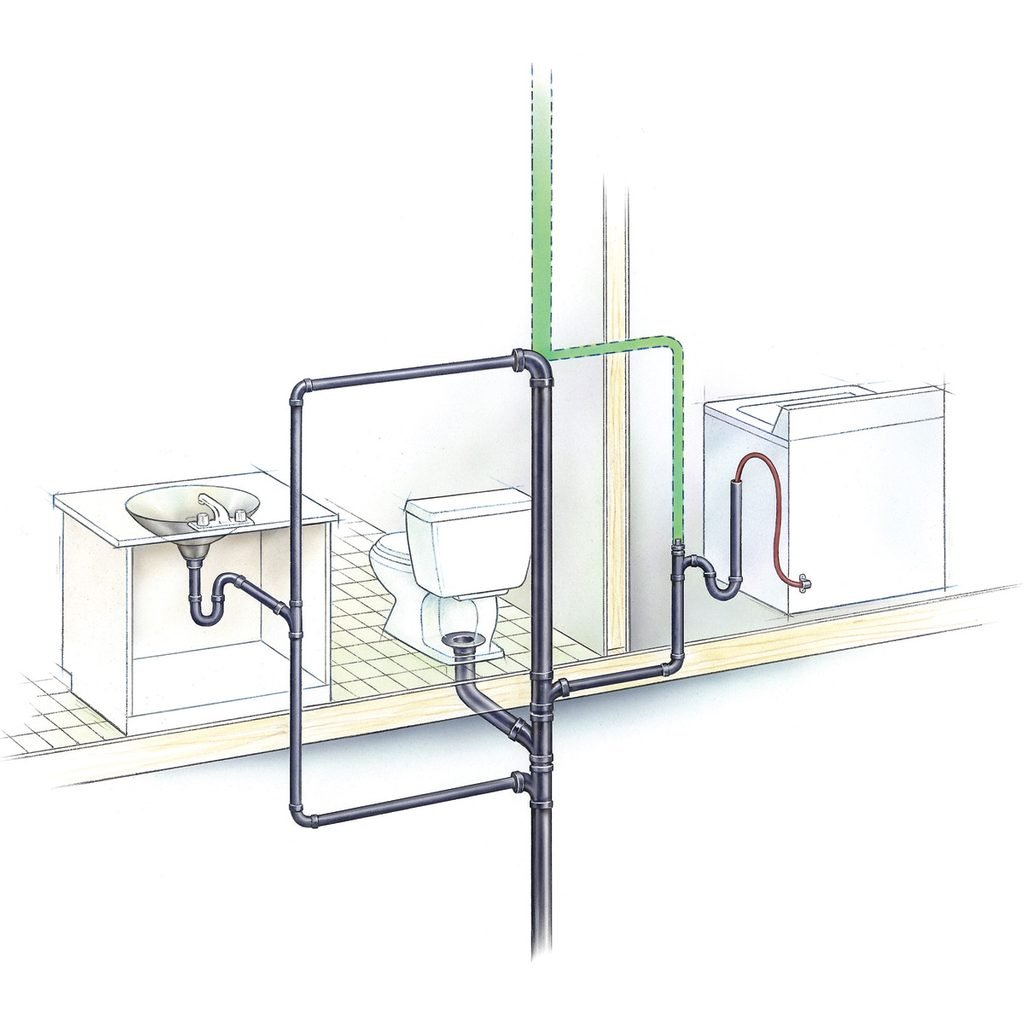Ensuring Adequate Ventilation in Your Plumbing System: The Reason
Ensuring Adequate Ventilation in Your Plumbing System: The Reason
Blog Article
This post below involving What Is A Plumbing Vent & How Do They Work? is seriously captivating. Don't miss out on it.

Appropriate air flow in pipes systems is frequently forgotten, yet it is essential for preserving the functionality and safety of your home's pipes. Air flow assists manage atmospheric pressure, stop the accumulation of dangerous gases, and make sure the effective removal of waste. In this overview, we will certainly explore the significance of correct pipes ventilation, how it functions, and the advantages it brings to your pipes system.
Just How Ventilation Functions in Plumbing Systems
Atmospheric Pressure Policy
Correct air flow maintains well balanced atmospheric pressure within the plumbing system. When water flows through pipelines, it displaces air. Without ample ventilation, this displacement can create unfavorable pressure, resulting in slow drains pipes or siphoning of water from traps, which can cause unpleasant odors to leak into the home.
Protecting Against Sewer Gas Accumulation
One of the most important features of plumbing vents is to stop drain gases, such as methane and hydrogen sulfide, from building up within the home. These gases can position severe wellness threats and are extremely flammable. Vent pipes allow these gases to leave safely outside.
Aiding in Waste Removal
Air flow helps in the efficient elimination of wastewater by preventing airlocks in the drainage system. When air can flow openly through the vents, it permits water and waste to move smoothly through the pipelines, decreasing the threat of obstructions and back-ups.
Advantages of Correct Ventilation
Boosted System Effectiveness
Effectively ventilated pipes systems operate a lot more efficiently, with fewer blockages, faster draining pipes, and much less strain on the pipes. This effectiveness expands the lifespan of the pipes system.
Improved Air Top Quality
By avoiding drain gases from entering your home, appropriate air flow adds to better indoor air quality, making your living setting healthier and a lot more comfy.
Stopping Water Damage
Appropriate air flow aids stop water from being siphoned out of traps, which can lead to sewer gases going into the home and triggering water damage in time.
Steps to Ensure Correct Air Flow
Consulting Pipes Codes
Always speak with local pipes codes when developing or changing your pipes system. These codes provide the essential guidelines for proper airing vent and ensure your system fulfills safety criteria.
Regular Assessment and Maintenance
Regular assessments can help recognize possible ventilation problems before they become major troubles. Upkeep jobs, such as cleansing air vent pipes and checking for obstructions, are necessary for maintaining the system in good working order.
Specialist Installation
For brand-new installments or significant adjustments, it's important to work with a specialist plumber. They have the experience to make certain the air flow system is properly created and set up according to code.
Understanding Air Flow in Pipes
Ventilation in pipes refers to the network of pipes that permit air to stream through the drainage system. These vents offer several functions, consisting of controling air pressure within the pipelines, preventing drain gases from going into the home, and assisting in the smooth flow of wastewater.
Types of Plumbing Vents
Key Stack Vent
The primary pile vent, additionally referred to as the air vent pile, is the key vent in a plumbing system. It expands from the main drainpipe line up through the roof covering, enabling gases to escape and fresh air to enter the system.
Branch Vent
Branch vents link to the primary pile vent and serve private fixtures, such as sinks, bathrooms, and showers. These vents ensure that each component has sufficient air flow to function effectively.
Air Admission Shutoff (AAV).
An Air Admission Shutoff (AAV) is a one-way shutoff that allows air to get in the pipes system without the requirement for a typical air vent pipe expanding via the roofing system. AAVs are commonly utilized in improvements or locations where installing a basic vent is impractical.
Indicators of Poor Ventilation in Plumbing.
Slow Draining Fixtures.
If your sinks, tubs, or bathrooms are draining pipes slowly, it could be a sign of poor air flow. Insufficient air circulation can produce a vacuum effect, making it hard for water to drain effectively.
Gurgling Seems.
Gurgling audios originating from drains are usually a result of air being sucked with water catches as a result of adverse pressure in the pipes. This is a clear sign of inadequate air flow.
Undesirable Odors.
Drain odors inside your home are a red flag that your plumbing system is not correctly ventilated. This might suggest that sewage system gases are not being appropriately vented outside, resulting in possibly unsafe conditions.
Typical Air Flow Blunders.
Poor Vent Sizing.
Using undersized vent pipes can lead to bad air circulation and stress inequalities in the system. It's vital to use vents that satisfy the certain requirements of your plumbing system.
Improper Vent Placement.
Placing vents too far from the fixtures they serve can minimize their performance. Correct positioning ensures that air can move openly and successfully via the system.
Disregarding Code Needs.
Building regulations supply certain guidelines for plumbing air flow. Disregarding these codes can cause a system that fails to operate correctly and may bring about costly repair work or health hazards.
Final thought.
Appropriate ventilation is a critical part of any kind of plumbing system, ensuring that it works efficiently and securely. By comprehending the significance of air flow, identifying the signs of poor ventilation, and taking steps to preserve your system, you can avoid costly problems and protect your home's air quality.
4 Things You Should Know About Your Plumbing Vents
What Plumbing Vents Are
Also called a vent stack, a plumbing vent is a vertical pipe attached to your drain line that runs through your roof. The plumbing vent pipe, or plumbing air vent, removes gas and odors from your plumbing system and allows fresh air to enter the pipes, helping the water to flow out of the drain pipes.
What Plumbing Vents Do
Plumbing vents have two basic functions. One of which is to allow unpleasant smelling wastewater and sewer gasses to escape your plumbing system instead of entering your home. Plumbing vent pipes are typically located on roofs, away from windows, to ensure the fumes exit the home completely.
The other function of the plumbing vent is to move fresh air into your plumbing system. This helps move water through every plumbing fixture in your house, like toilets and sink drains. Think of the way in which you need to let a little air into the bottle as you pour soda in order to make the drink flow smoothly.
Different Types of Plumbing Vents
True vent: This is the most common vent option. In simplest terms, a true vent is a vertical pipe attached to your drain line that exits through the roof. They often function as the main vent that other fixtures can connect to. Re-vent pipe or auxiliary vent: Attached to the drain line near specific plumbing fixtures, re-vent pipes run up and over to connect to the main vent. Common vent: Two plumbing fixtures installed on opposite sides of a wall are typically tied into the vent stack using something known as a sanitary cross. Wet vent: This venting option operates as a drain pipe and a vent at the same time. Wet vent drainage systems drain water from one fixture while venting the air from another. Although they’ve been used for over 100 years, wet vent systems have only recently been added to the plumbing code in many areas. If you’re planning on installing one in a bathroom remodel, make sure you check your local code prior to construction. Loop vent: For free-standing fixtures like kitchen island sinks, loop vents are ideal. These vent pipes run under the floor, rise from the P-trap, and create a loop inside the cabinet sink. Air admittance valve: An AAV is a one-way mechanical valve typically installed at the site of the plumbing fixture. AAVs allow venting to occur without having to tie into a larger venting system. They’re ideal for venting fixtures where you aren’t able to easily connect to an existing vent system. Common Plumbing Vent Issues
Although vent pipes typically don’t have water flowing through them, they’re still subject to many typical plumbing issues. For example, clogs are one of the most common problems associated with sewer vent pipes. If your vent pipe gets clogged, all of your plumbing fixtures tied into the vent stack will be affected.
A sink with a slow drain that bubbles and gurgles or a strong sewage smell around your toilet are both indicators that your toilet vent pipe is clogged. Because most vent pipes exit through the roof, old leaves, twigs or even a bird’s nest could be clogging the pipe.
Clogs in your vent pipe system cause a buildup of negative pressure, meaning that water won’t be able to flow out of your home very well. It’s similar to putting your finger over the opening of a straw to trap water inside. When you remove your finger, the water is able to flow out of the straw.
If you suspect you have any blockage in your vent, make sure you have a professional come examine the situation. Left unchecked, a blocked air vent can lead to other costly repairs, like leaks and sediment buildup.
Under Pressure
Pipe vents are essential aspects of a home’s plumbing system. Owning a home means learning about all sorts of things you never put much thought into before. But by understanding as much as you can about the important systems of your home, you can keep those budgets intact and those anxiety levels low.
https://www.homeserve.com/en-us/blog/home-improvement/plumbing-vents/

I am just very curious about What Is a Plumbing Vent and Why Is It Important and I am hoping you liked our piece. Make sure you pause to share this entry if you enjoyed it. Thank you for taking the time to read it.
Click Here Report this page